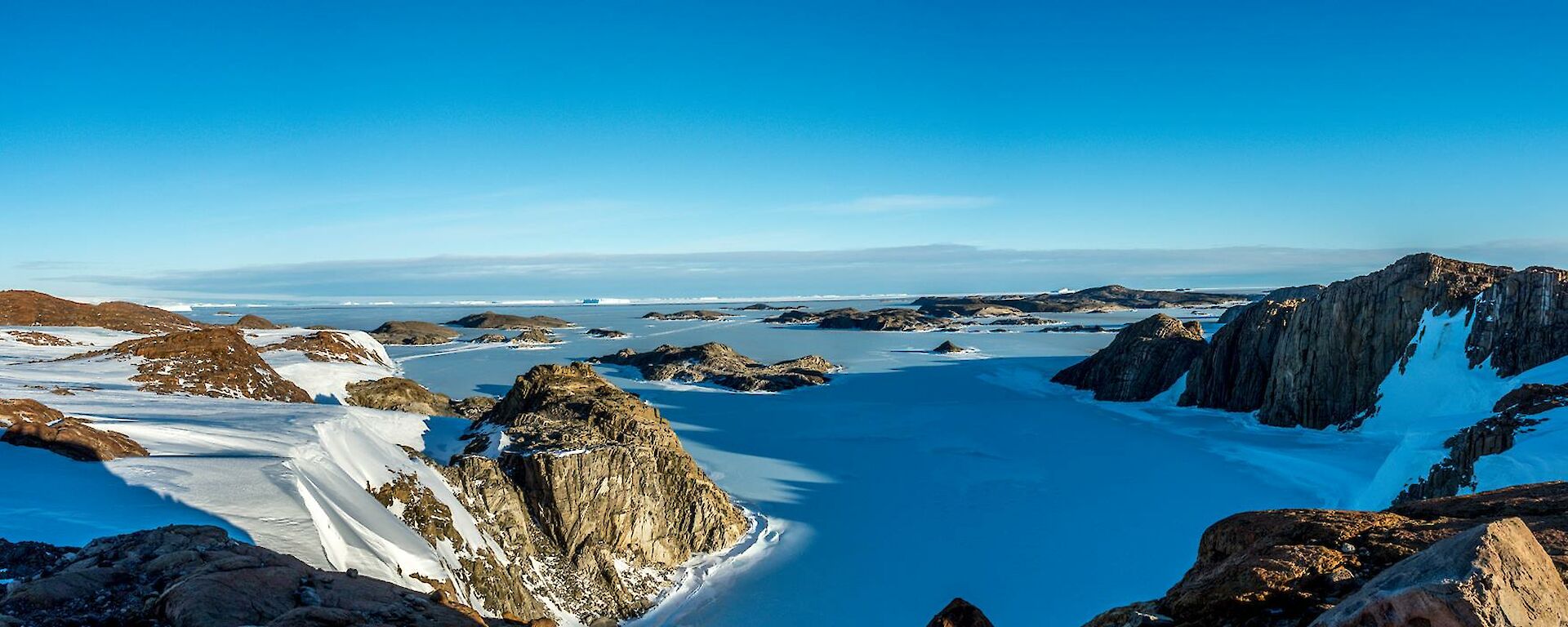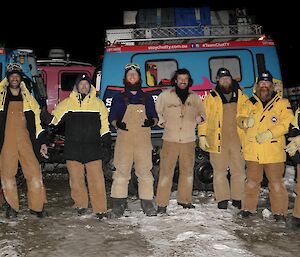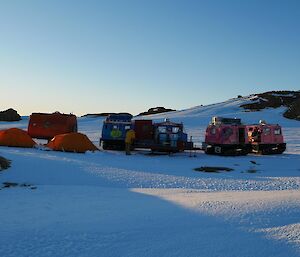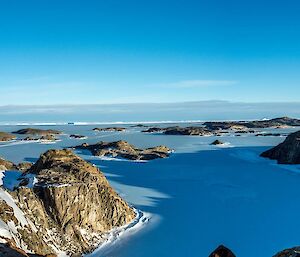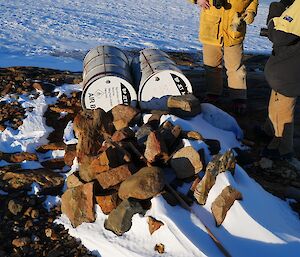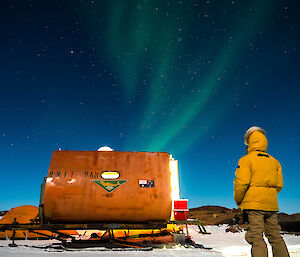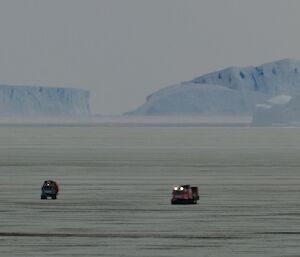A favourable weather window presented itself last week, allowing the first group to embark on their traverse across the Sørsdal Glacier.
We had been preparing for this for a while and the air of excitement was high as we prepared to set off. The group consisted of Simon, our trusty FTO (field training officer), Glen, Dan, Terry, Graham, Warren and Jason. We took two Hägglunds vehicles, one towing the RMIT van (like a tiny caravan), the other towing a sled with fuel drums and the toilet (Digger’s Rest). We had an entertaining moment right at the start. We had just radioed in that we were all set to go and about to head out onto the sea ice, when both Hägglunds vehicles refused to move. How could we be stuck already, we hadn’t even left! Nothing a little jiggle of the steering wheel couldn’t fix, and we were off.
We had a smooth run across the sea ice and up onto the Plateau, bopping along to a few tunes. It was a little breezy, but visibility and surface conditions were good so we were happy to continue across to the Sørsdal Glacier.
The crossing of the Sørsdal was the crux of the trip, where we had to be vigilant for crevasses. Most of these were only narrow, maybe half a metre wide, but we had to make sure these were crossed at right angles to avoid the possibility of dropping a Hägglunds vehicle track into one. Conditions were great. The surface was mostly blue ice with patchy snow cover and the crevasses were clearly identifiable. There were only two short sections where there was a bit more snow cover hiding the crevasses, which brought our crevasse probing training into action. Crevasse probing involves one person attached to a rope walking in front of the Hägglunds vehicle with a long spike, bashing it into the snow/ice to test its integrity. While it was great to use our new skills for real, nobody was particularly disappointed in the small amount of probing required. In short, it is exhausting!
After about 11 hours of driving we began to lose light and it was clear we would be making camp before descending to the sea ice and Hop Island, our intended destination. We found a beautiful spot with incredible panoramic views at the top of Macey Ramp, one of the access points to the sea ice used in previous years.
The following day was magnificent! The weather was gorgeous, and the views spectacular. It became apparent fairly early that it was not going to be easy to find a way onto the sea ice, as we have had such little snow and the ramps that had been used in previous years were not as well developed, and were either too steep or ended in cliffs. We weren’t worried at all about not making it to Hop Island. We were all more than happy to stay at our camp another night and spend the day pottering around exploring. The beauty of our elevated position was that we had expansive views across the whole of the Rauer Group, back towards the Vestfold Hills to the north, and down across the Chaos Glacier and the Larsemann Hills further south.
While poking around investigating possible ways down to the sea ice we came across a cache. It consisted of two fuel drums, a tent, and a container of food. Judging by the used-by date of the chocolate we deduced the cache was from 2002 (the big sticker on the crate supported our theory).
On day three we decided we’d seen what we had wanted to see, and thought we’d split the return journey and spend a night at Bandits Hut. The day went smoothly, and the weather was kind. We followed our outward trip back exactly so we didn’t need to probe again. A thoroughly enjoyable relaxing evening and next morning was spent at Bandits Hut, and we had a leisurely return to station Saturday, taking our time admiring icebergs along the way.
Thanks go to all the people involved in making this trip possible, back in Kingston and Hobart, and on station.
Team 2 eagerly awaits the next weather window…

